SÜDWESTKIRCHHOF STAHNSDORF
Greetings, friends of infrared photography. Yesterday I took a trip to the Südwestkirchhof Stahnsdorf. This is located on the south-western outskirts of Berlin, near Potsdam. I have rarely visited such a special, impressive place as this cemetery. The entire area is 206 hectares in size. This makes the Südwestkirchhof the second largest cemetery in Germany. I'm quite good on foot, but I was only able to explore a fraction of the cemetery. I will definitely go there again. Cemeteries aren't usually very busy anyway, but at this cemetery I spent several hours on my own. I enjoyed the peace and seclusion, a good balance to the noise and hustle and bustle of the city of Berlin.
Seid gegrüßt, Freunde der Infrarotfotografie. Gestern unternahm ich einen Ausflug auf den Südwestkirchhof Stahnsdorf. Dieser befindet sich am südwestlichen Berliner Stadtrand, in der Nähe von Potsdam. Ich habe selten einen solch besonderen, beeindruckenden Ort besucht, wie diesen Friedhof. Das gesamte Areal ist 206 ha groß. Der Südwestkirchhof ist somit der zweitgrößte Friedhof Deutschlands. Ich bin zwar recht gut zu Fuß, aber ich habe nur einen Bruchteil des Friedhofs erkunden können. Ich werde ganz sicher nochmal dorthin fahren. Auf Friedhöfen ist ja ohnehin meist nicht viel Betrieb, aber auf diesem Friedhof war ich mehrere Stunden alleine unterwegs. Ich genoss die Ruhe und Abgeschiedenheit, ein guter Ausgleich zum Lärm und Trubel in der Großstadt Berlin.

📷 Nikon Z5 (ful spectrum converted) - Soligor 25/2,8 - f8 - ISO 400 - 1/2000 - B+W 091 Filter
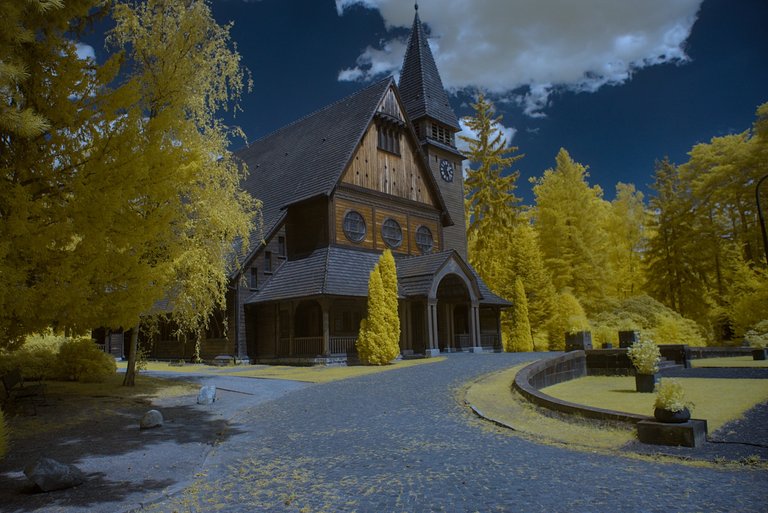
📷 Nikon Z5 (full spectrum converted) - Soligor 25/2,8 - f8 - ISO 400 - 1/1250 - B+W 091 Filter
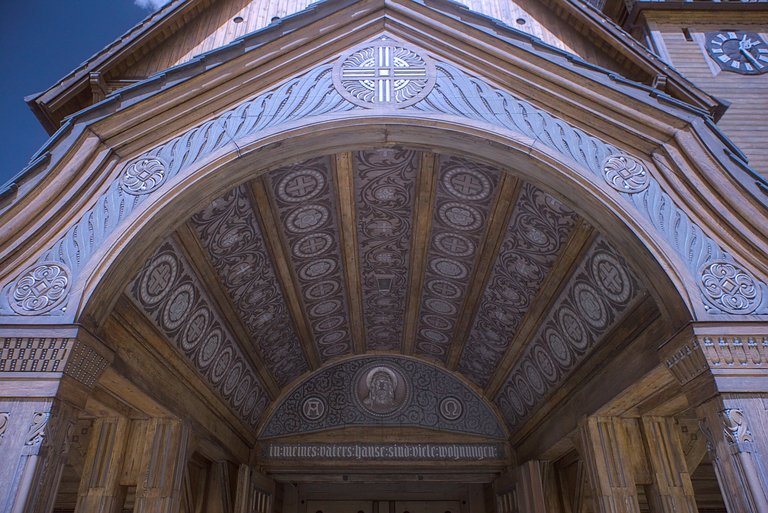
📷 Nikon Z5 (full spectrum converted) - Soligor 25/2,8 - f8 - ISO 400 - 1/800 - B+W 091 Filter
In the first three pictures you can see the cemetery church. This wooden church was built in 1911 in the style of Norwegian stave churches. I've never seen anything like it before, but I've never been to Norway either. Unfortunately, I can't show you any pictures of the interior. There was a funeral service in the church. I hope to be able to take some photos of the interior on my next visit.
In den ersten drei Bildern seht ihr die Friedhofskirche. Diese hölzerne Kirche wurde 1911 im Stil norwegischer Stabkirchen errichtet. Etwas Ähnliches habe ich zuvor noch nie gesehen, aber ich war auch noch nie in Norwegen. Leider kann ich euch keine Bilder des Innenraums zeigen. In der Kriche fand eine Trauerfeier statt. Beim nächsten Besuch kann ich hoffentlich auch einige Fotos des Innenraumes machen.
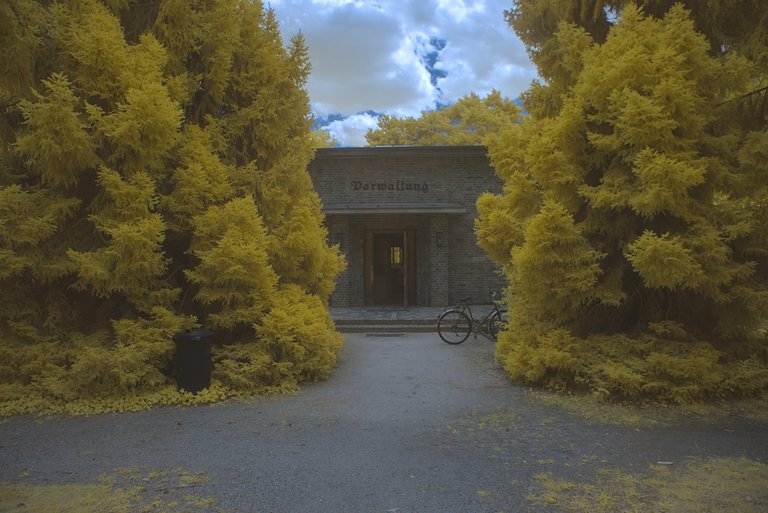
📷 Nikon Z5 (full spectrum converted) - Soligor 25/2,8 - f8 - ISO 400 - 1/800 - B+W 091 Filter
HISTORY
From around 1850, burial spaces in Berlin's cemeteries became increasingly scarce due to the rapid increase in population. These cemeteries were all located in populated areas and could therefore not be expanded. As a solution to this problem, planning began for a large cemetery outside the city. The Berlin Protestant community acquired the large site. As one of the first open-air cemeteries in Germany, it was designed as a natural forest cemetery with a romantic appearance. The Südwestkirchhof was opened in 1909, when the Berlin City Synod financed the construction of a suburban railroad line from Wannsee station to Stahnsdorf, the so-called Friedhofsbahn. The first train ran in 1913 and without this S-Bahn line, the cemetery would have been almost inaccessible for most Berliners.
Ab ungefähr 1850 wurden die Begräbnisplätze auf den Berliner Friedhöfen durch den raschen Bevölkerungsanstieg immer knapper. Diese Friedhöfe lagen alle in bewohnten Gebieten und konnten somit nicht erweitert werden. Als Lösung für dieses Problem begann man mit der Planung eines Großfriedhofes außerhalb der Stadt. Die Berliner evangelische Gemeinde erwarb das große Gelände. Als einer der ersten Freidhöfe in Deutschland wurde dieser als naturnaher Waldfriedhof mit romantischem Erscheinungsbild geplant. Eröffnet wurde der Südwestkirchhof im Jahr 1909. Die Stadtsynode Berlin finanzierte den Bau einer S-Bahnstrecke vom Bahnhof Wannsee bis nach Stahnsdorf, die sogenannte Friedhofsbahn. Der erste Zug fuhr im Jahr 1913. Ohne diese S-Bahnlinie wäre der Friedhof für die meisten Berliner kaum zu erreichen gewesen.

📷 Nikon Z5 (full spectrum converted) - Soligor 25/2,8 - f8 - ISO 400 - 1/800 - B+W 091 Filter
From 1938, many of the deceased were reburied from two cemeteries in Berlin Schöneberg. The two cemeteries were to make way for some megalomaniac project of the Reich capital Germania. As a result, there are a number of graves in the Südwestkirchhof that date from before the opening.
Ab 1938 wurden viele Verstorbene von zwei Friedhöfen in Berlin Schöneberg umgebettet. Die beiden Friedhöfe sollten irgendeinem größenwahnsinnigen Projekt der Reichshauptstadt Germania weichen. Somit finden sich auf dem Südwestkirchhof etliche Gräber, die aus der Zeit vor der Eröffnung stammen.

📷 Nikon Z5 (full spectrum converted) - Soligor 25/2,8 - f8 - ISO 400 - 1/200 - B+W 091 Filter
Due to the division of Germany, the cemetery was located on GDR territory from 1949. From 1953, visitors from West Berlin were only allowed to enter the cemetery with a pass. When the Wall was built in 1961, the Freidhof was now completely cut off from the actual West Berlin catchment area. Although the cemetery was still open for burials in the following years, it became less and less important. There were no more than 80 burials per year. In 1961, the S-Bahn line was also dismantled. The station building was blown up in 1976. After my long walk around the cemetery, I went in search of the remains of the S-Bahn line. There is not much left. The platform has now been almost completely taken over by nature.
Durch die Teilung Deutschlands lag der Friedhof ab 1949 auf dem Gebiet der DDR. Ab 1953 durften Besucher aus Westberlin den Friedhof nur mit einem Passierschein betreten. Mit dem Mauerbau im Jahr 1961 war der Friedhof nun vollständig vom eigentlichen Einzugsgebiet West-Berlin abgeschnitten. In den folgenden Jahren war der Friedhof zwar weiterhin für Bestattungen geöffnet, aber er verlor immer mehr an Bedeutung. Mehr als 80 Bestattungen pro Jahr gab es nicht. 1961 wurde darüber hinaus die S-Bahnstrecke demontiert. Im Jahr 1976 wurde das Bahnhofsgebäude gesprengt. Nach meiner großen Runde über den Friedhof machte ich mich auf die Suche nach Überresten der S-Bahnstrecke. Viel ist nicht mehr übrig. Der Bahnsteig ist mittlerweile fast komplett von der Natur übernommen worden.

📷 Nikon Z5 (full spectrum converted) - Soligor 25/2,8 - f8 - ISO 400 - 1/250 - B+W 091 Filter
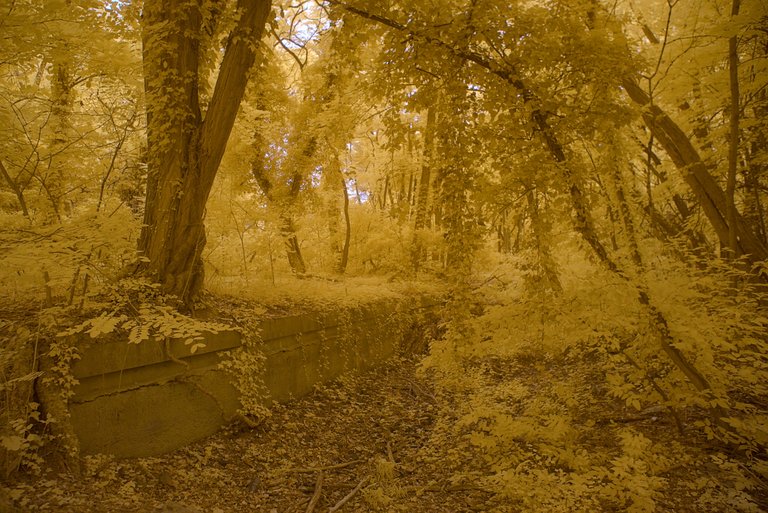
📷 Nikon Z5 (full spectrum converted) - Soligor 25/2,8 - f8 - ISO 400 - 1/125 - B+W 091 Filter
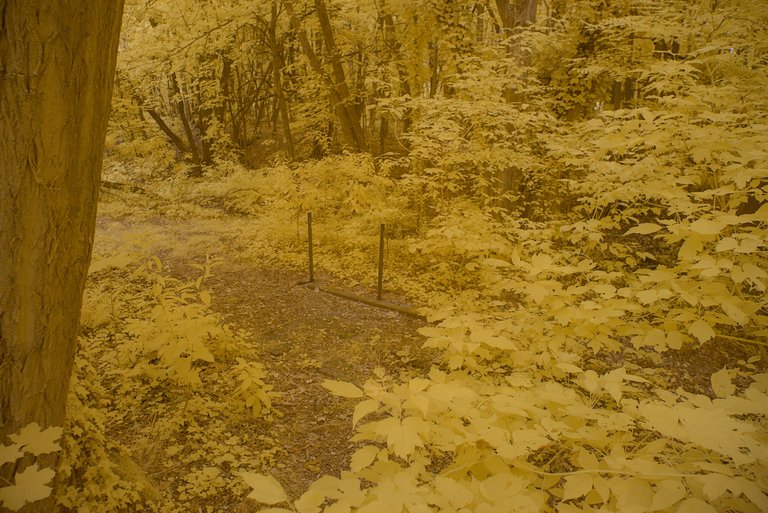
📷 Nikon Z5 (full spectrum converted) - Soligor 25/2,8 - f8 - ISO 400 - 1/125 - B+W 091 Filter
The cemetary has been a listed building since 1982. However, due to its size and the lack of financial resources, it is not possible to preserve all the gravesites. Most are left to their fate and reclaimed by nature. Normally, the descendants of the deceased pay for the care of the grave. But hardly any West Berliners will have transferred money to the GDR cemetery administration to maintain the grave. And in the meantime there are no longer any descendants for most of the graves who could take over the financing. In the second part, I will show you the special atmosphere that prevails in this particular cemetery.
Seit 1982 steht der Friedhof unter Denkmalschutz. Aufgrund der Größe und der fehlenden finanziellen Mittel ist es allerdings nicht möglich alle Grabstellen zu erhalten. Die meisten werden ihrem Schicksal überlassen und von der Natur zurück erorbert. Normalerweise kommen die Nachfahren des Verstorbenen für die Grabpflege auf. Aber kaum ein Westberliner wird Geld an die DDR Friedhofsverwaltung zur Pflege der Grabstelle überwiesen haben. Und mittlerweile gibt es für die meisten Grabstellen keine Nachfahren mehr, die die Finanzierung übernehmen könnten. Welche besondere Stimmung dadurch auf diesem besonderen Friedhof herscht werde ich im zweiten Teil zeigen.



WHAT IS LIGHT PAINTING?

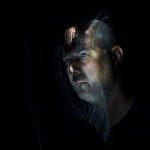
LICHTKUNSTFOTO
If you like my art visit www.lichtkunstfoto.de for more Light Art Photography and informations about Light Painting. Join me on Flickr Twitter



For more great Light Art Photography, Light Painting and inspiration check these light painters: @marlasinger666 @fadetoblack @fastchrisuk @dawnoner @oddballgraphics @martbarras @stepko @rod.evans.visual @yo-hoho @maxpateau @gunnarheilmann @neilru75 @maximepateau @ryuslightworks @lightstabeu @candelart @lacelight

WE ARE LIGHT PAINTERS

To help and support the LightPainters community here on Hive I would appreciate your delegation of HivePower. Any amount is appreciated. It does not require much to get started, we are happy for any gesture. @lightpainters
How to delegate?
Delegate 50HivePower, [50HP]
Delegate 250HivePower, [250HP]
Delegate 500HivePower, [500HP]
Delegate 1000HivePower, [1000HP]
All the Hive Power will help to upvote the artist's contribution as part of the LightPainters community.
Abgefahrene Ergebnisse die du von deinem Ausflug mitgebracht hast. 😎
Danke. 😁
Wow, very beautiful photos, I want to look at each one for a long time
Thanks
You're welcome!
It’s obvious that you had an amazing trip
The pictures are very very beautiful
Thanks
It looks like you had a fascinating journey exploring such a unique place. The photos capture its serene atmosphere perfectly. Well done friend
Thanks
Congratulations @lichtkunstfoto! You have completed the following achievement on the Hive blockchain And have been rewarded with New badge(s)
Your next target is to reach 29000 upvotes.
You can view your badges on your board and compare yourself to others in the Ranking
If you no longer want to receive notifications, reply to this comment with the word
STOP